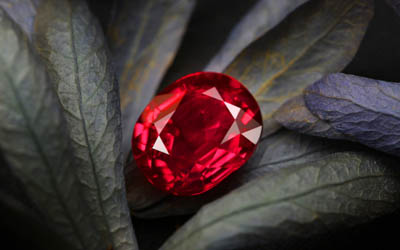Color: The color of a gemstone is one of its most important characteristics. Gemstones come in a wide range of colors, from the deep blues of sapphires to the vivid reds of rubies. The color of a gemstone is determined by the presence of certain minerals or trace elements.
Clarity: The clarity of a gemstone refers to how clear or transparent it is. Gemstones can be completely clear, or they can have inclusions, which are small imperfections that can affect their clarity. Inclusions can be tiny crystals, bubbles, or other mineral deposits that are trapped inside the gemstone. The clarity of a gemstone can affect its value, with clearer stones being more valuable.
Cut: The cut of a gemstone refers to its shape and the way it has been cut and polished. A well-cut gemstone will have a symmetrical shape and will reflect light in a way that makes it sparkle. The cut of a gemstone can also affect its value, with well-cut stones being more valuable than poorly cut stones.
Carat: The carat is the unit of weight used to measure gemstones. One carat is equal to 0.2 grams, and gemstones can range in weight from less than a carat to several carats. The weight of a gemstone can affect its value, with larger stones being more valuable than smaller stones.
Hardness: The hardness of a gemstone refers to how resistant it is to scratching and other forms of damage. Gemstones are rated on the Mohs scale, which ranges from 1 (very soft) to 10 (very hard). Diamonds are the hardest gemstone and are rated 10 on the Mohs scale, while talc is the softest and is rated 1. The hardness of a gemstone can affect its durability and how well it will hold up over time.
Luster: The luster of a gemstone refers to how shiny and reflective it is. A gemstone with a high luster will be very shiny and reflective, while a gemstone with a low luster will be dull and lackluster. The luster of a gemstone can affect its value. Gems that have a high luster being more valuable than those with a low luster.
Fluorescence: Fluorescence is the ability of a gemstone to glow or emit light when exposed to ultraviolet light. Some gemstones such as diamonds can exhibit fluorescence, while others such as sapphires do not. The presence of fluorescence can affect the value of a gemstone, with stones that exhibit strong fluorescence being more valuable than those that do not.
